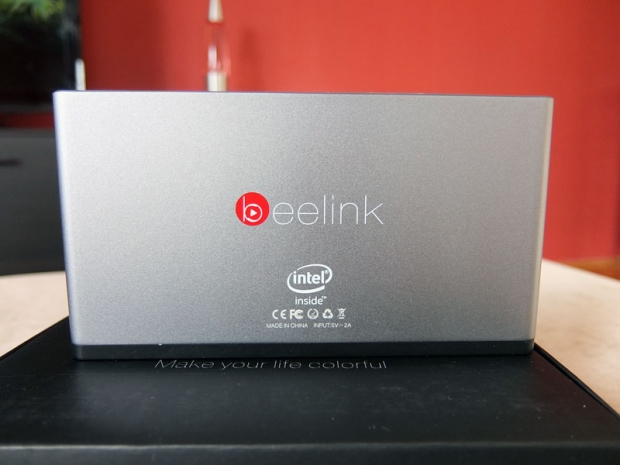Index
Review: Pocketable Windows PC and, uhm, powerbank?
Here's a thought – why not use Intel's tablet platform to build a compact, fanless mini PC? What could possibly go wrong?
The Beelink Pocket P1 is one such device, and it started shipping a few weeks ago. We'll get to specs in a second, but first let's explain how the P1 and similar micro-PCs came to being.
Intel's contra-revenue programme helped unload millions of Bay Trail SoCs in mainland China, where they were eagerly scooped up by tablet vendors who finally got a chance to build cheap (but small) Windows tablets, based around a great Intel chip. It was only a matter of time before local manufacturers started using the chips in ways Intel never intended – in bigger tablets, convertibles, TV boxes, mini PCs and stick PCs.
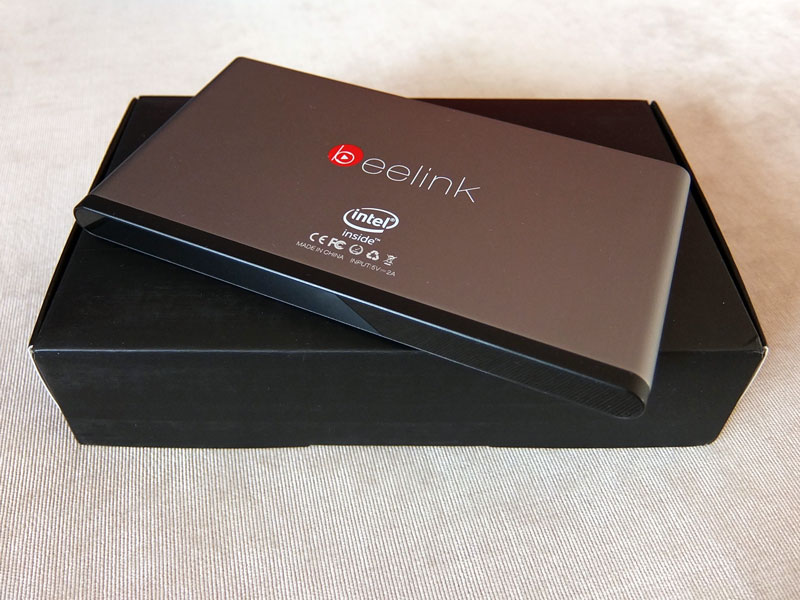
This created a bit of a problem for Intel, which recently announced its own Compute Stick. We discussed the problems facing the new form factor in a feature piece a couple of weeks ago, so you can check it out for some background.
While Beelink may not be a very familiar brand in the west, the company has been around for a while, churning out Android TV boxes and accessories. The Pocket P1 could easily be mistaken for an Android box, but it's actually a Windows machine.
In essence, this is Intel’s standard Bay Trail tablet platform, without a screen and a few other bits. You get an Atom Z3735F SoC clocked at 1.33GHz (1.83GHz on Turbo), 2GB of RAM and 32GB of eMMC storage. Oh, there’s one more thing. Somewhere along the way Beelink “forgot” to dispense with the battery.
That’s about it, hence the resulting design is a very compact micro-PC, roughly the size of a phablet, so it's really pocketable. Speaking of which, you won't have to reach deep into your pocket to get one. The Beelink Pocket P1 sells for $129 via Gearbest, who supplied us with the review sample.
Design and Build Quality
When we first saw the Beelink P1 pre-order renders, we assumed that it was merely a cheap plastic housing with a Bay Trail PCB inside. However, we were wrong, very wrong.
The device is basically a slab of matte, gunmetal grey metal alloy. The sides are almost a millimetre thick and the device feels anything but cheap. The front features a band of matte black plastic with a piano black inlay. The back houses all the ports and it has the same glossy finish as the front.
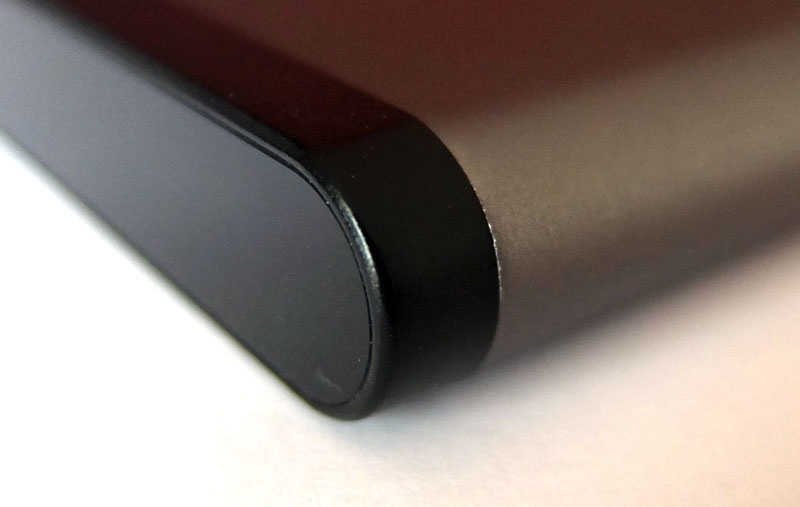
The device weighs 223g, so it feels very solid indeed. Since there’s no ventilation, the compact metal chassis also acts as a heatsink, so it does tend to get quite warm, especially after running benchmarks or doing anything that results in a lot of load. The upside is that there’s practically no way for dust to get into the device, aside from the ports on the rear.

The rear houses two USB ports, a micro USB DC-in port, mini HDMI out, audio jack, a micro SD card slot and a tiny power button. That’s it. There’s nothing on the front, not even an activity LED. Actually, we couldn't tell whether it was working or not when we first tried to install it, because we were expecting to see some signs of life on the front panel. Since this is a fanless machine with no moving parts, you really can't tell whether it’s booting up or not by just looking at the front panel.
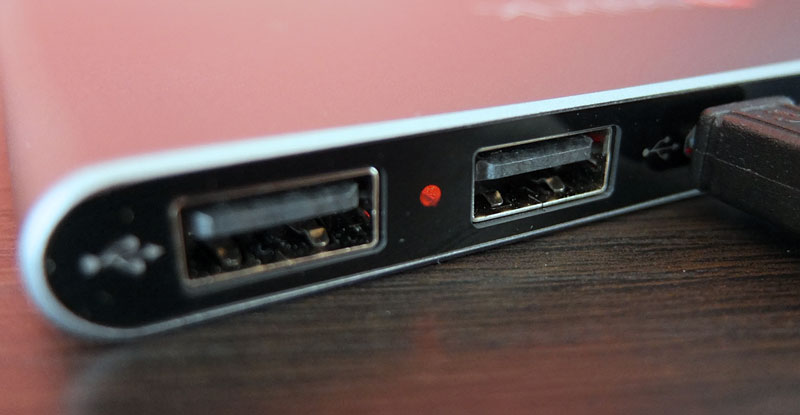
As far as aesthetics go, the design is minimal.
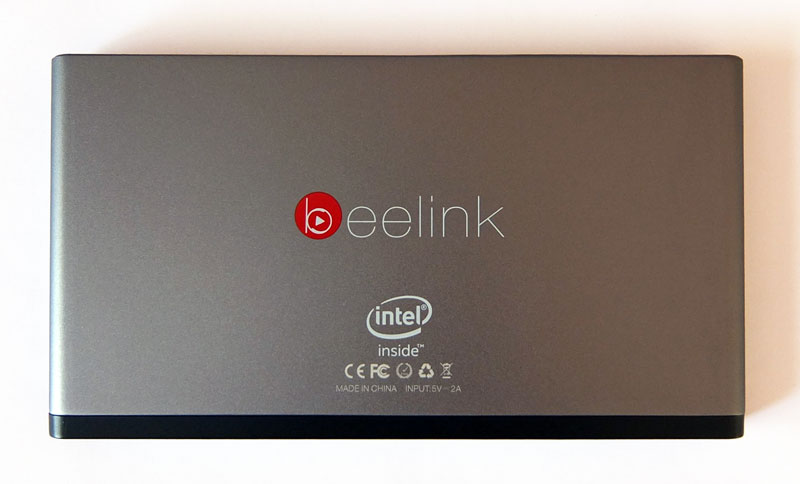
There’s a big Beelink logo on top, with an Intel Inside logo and the usual regulatory nonsense. Since it’s identical from either side, you can just flip it in case you don’t want to look at any of them.
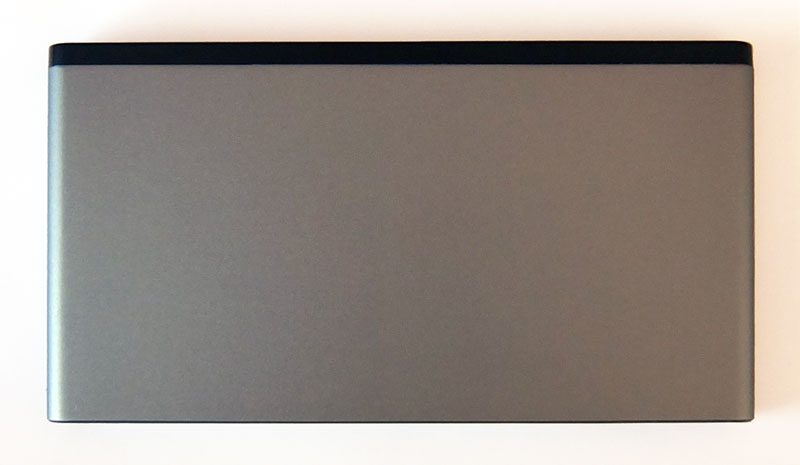
Overall, we found the design quite appealing. Beelink kept things as simple as possible, and focused all its efforts on build quality instead. This was a good call, since the device looks and feels like a premium product. Bear in mind that a lot of big brands sell mid-range mini-PCs clad in plastic (and charge a small fortune for them).
Beelink Pocket P1 Specs and Performance
Since we’re dealing with an Atom Z3735F system, there’s really no point in running a lot of chip benchmarks and talking about performance. The chip has been around for quite a while, and we’ve had a chance to try out numerous Bay Trail machines over the past 15 months.
The bottom line is that you’ll get decent entry level performance. Bay Trail SoCs are still powerful enough to deal with basic computing needs – browsing, content consumption in 1080p, Office applications and so on. However, we suspect most Pocket P1s will end up in living rooms rather than offices. Unless you need 4K/UHD support, or like to game in the living room, a Bay Trail processor should do the trick.
Beelink Pocket P1 Specifications:
- Processor: Intel Atom Z3735F, quad-core, 1.33GHz stock, 1.83GHz Turbo, 22nm
- Graphics: Intel HD Graphics, 311MHz base, 646MHz burst
- RAM: 2GB DDR3L
- Storage: 32GB, expandable via microSD card up to 32GB
- Wireless: dual-band 802.11b/g/n, Bluetooth 4.0
- Dimensions: 152.3 x 83 x 11.4mm (5.99 x 3.26 x 0.45in)
- Weight: 223g
- Ports: 2 x USB 2.0, mini HDMI, 3.5mm audio, micro USB in (5V DC)
- Battery: ~4000mAh (capacity not listed in official spec)
Although we didn’t see much point in running loads of benchmarks, we had to try a few, just to see how the system behaves under load.
In 3DMark Ice Storm, the Atom scored 14,403, which is obviously not enough for gaming. However, it’s more than enough for the occasional casual game and content consumption.
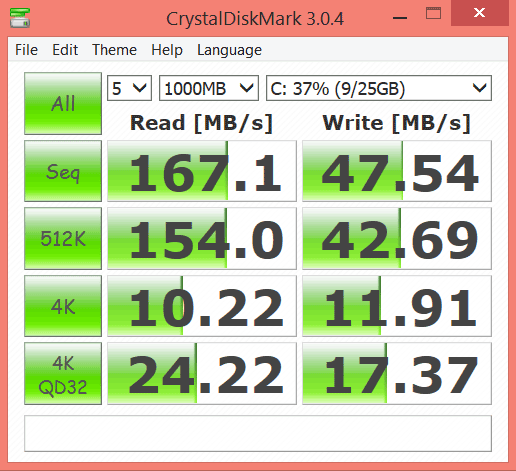
Our biggest concern was the storage, since we are dealing with a device built to a budget. Luckily, the results weren’t bad, as a couple of benchmarks demonstrate.
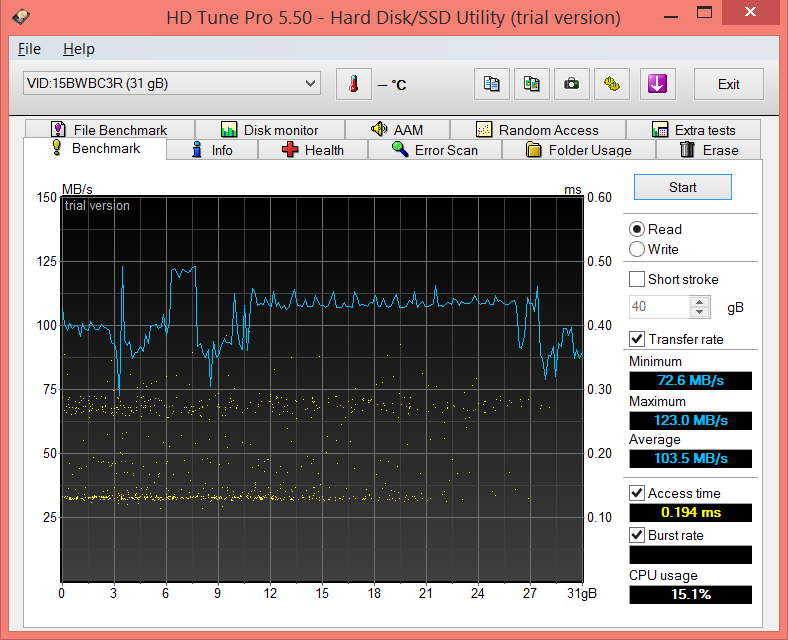
In fact, the results were better than on the Asus T100TA, the first Bay Trail device we had a chance to test. The drive comes from Samsung.
While Bay Trail is roughly 18 months old, it’s still going strong and it will take a while before 14nm SoCs take over. On the upside, we’re not sure new Atoms will be as cheap as Bay Trail parts, so there’s a chance entry-level PCs like this will end up a bit pricier. Although it’s a 22nm part, bear in mind that this particular SKU was designed for tablets, so efficiency is excellent. Running a browser and tinkering with a few files, the system consumed just a few watts.
Overall, performance should not be an issue. Our only concern was heat. After running a few benchmarks (and charging the battery), the device heated up to 40+ degrees Celsius. Since it’s metal, the heat was evenly distributed, which is good news – the chassis acts like a heatsink.
Setup and Everyday Use
In this respect, there’s really not much to say about the Beelink Pocket P1 – it’s easy to live with and this is a plus, given the target audience (basic computing, living room media PC). However, there are a few things to keep in mind.
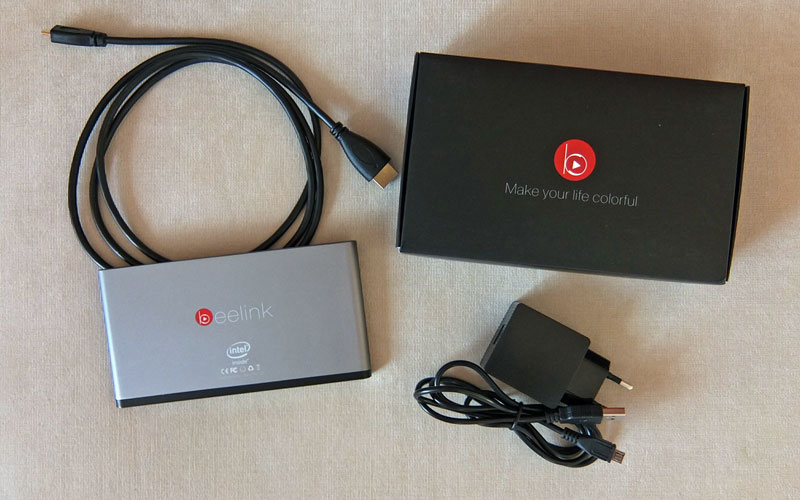
This is a device built to a budget, so you don’t get much in the way of extras. In fact, the retail box is smaller than many mini PCs out there. Even so, you do get everything you need to get it up and running, namely the mini HDMI to HDMI cable, standard 2A USB charger that acts as the power supply and that’s it. The only problem is the short power cable, which measures just 110cm. Since this is a standard USB cable, you should have no trouble replacing it with a longer one.
The device comes with a couple of protective stickers on the glossy plastic trim, and like we said we have no complaints about the build quality, or the retail package for that matter. In case you were wondering, there’s no VESA mount, so you can’t place it on the back of your TV or monitor.
Just about anyone can set it up in minutes, and since it has two full sized USB ports, you can use a wired desktop while you’re at it. One potential downside of the compact design is the lack of a standard HDMI port. It would just make it a bit more practical – it’s marketed as a pocket PC, yet you need a converter dongle or cable if you want to take it anywhere. That’s about it. Aside from the lack of activity LEDs on the front, this is the only drawback we could think of, and yeah, we’re nit-picking at this point.
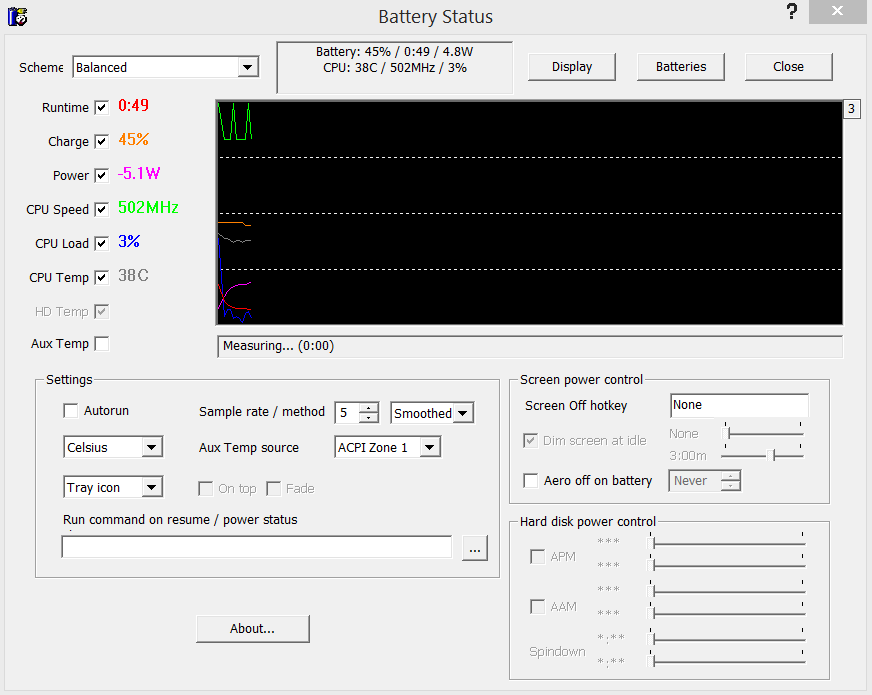
Once you get started, it won’t take long to figure out that you’re dealing with tablet hardware. When we started tinkering with it, we were amused to see a battery charging icon on the desktop, so we assumed it was a glitch and further evidence of its tablet roots. Much to our surprise, it turned out that the Beelink Pocket P1 really has an integrated battery. We weren’t expecting this, as the company does not mention it in the official spec. We crunched some numbers and figured out that this is a 4000mAh unit, but we’re not entirely sure about the capacity. We did get a few weird readings though, but they could be attributed to calibration or firmware issues.

Either way, the battery can power the system for a few hours. This is obviously a rather unusual addition to a mini PC design, but we guess some people might find it useful. The battery also turns the Pocket P1 into an emergency power bank, so you can use it on the road to top up your mobile. In case you plan to carry it around in your backpack, this could come in quite handy. Off grid, connected to a TV, running YouTube and charging a phone, the system battery test reported 5.1W power consumption. With the phone disconnected, the power draw dropped to 2.7W. If you find the idea of a powerbank/PC combo appealing, you may want to check out the Ainol Mini PC, a similar design with a 7000mAh battery.
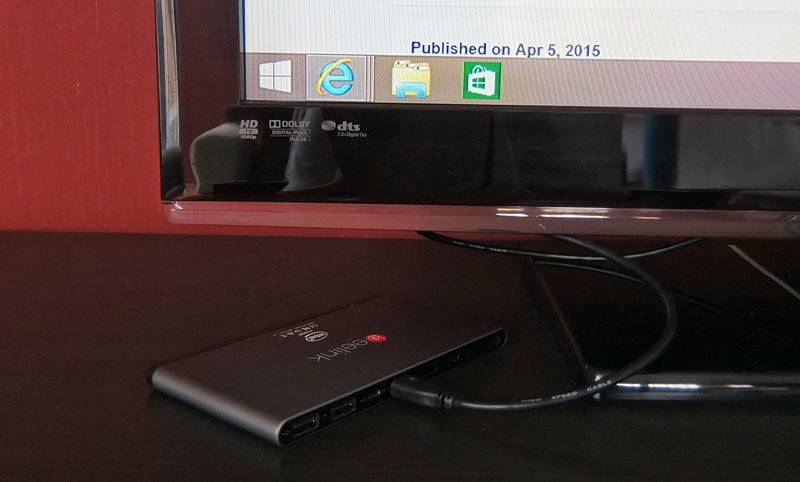
Anyway, the P1 has a lot of tablet DNA on the software and firmware side of things (which would also explain some weird battery readings). In addition, we were unable to access BIOS settings.
The tablet DNA is not a much of problem, more of an aesthetic nuisance, but we did encounter one potential issue. Intel’s display driver won’t let you play around with overscan features, so this is something to bear in mind. We had no trouble scaling it on an old Samsung TV, but this may be an issue on some monitors and TVs. Luckily, few devices should be affected. It’s obvious that this functionality was never implemented by the manufacturer (and it’s really not something found on many tablets).
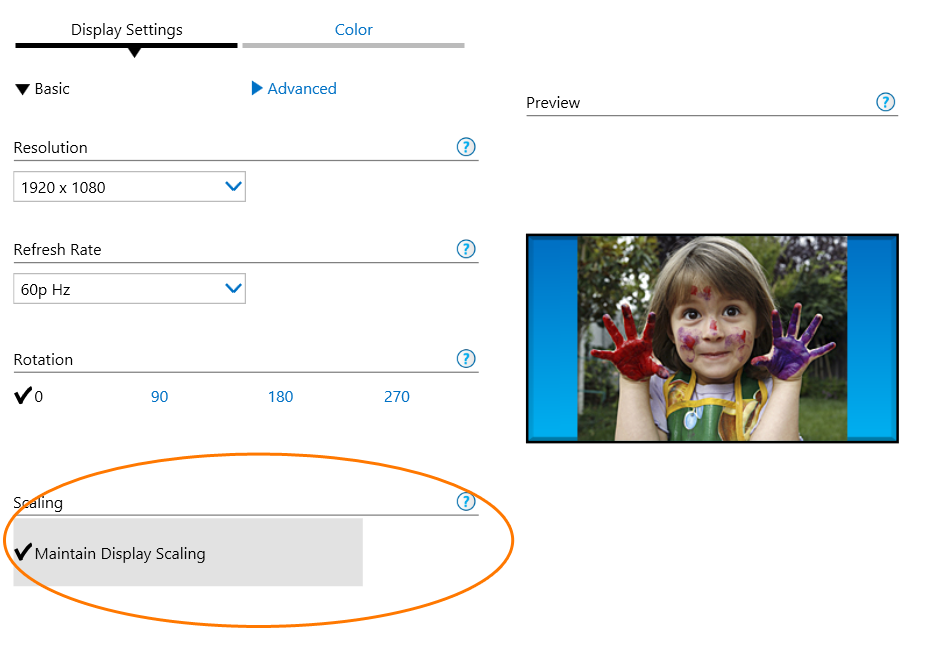
Another thing to bear in mind is that tablet platforms aren’t capable of delivering a lot of amps via USB headers. We tried connecting a 2TB Toshiba USB 3.0 drive and the device wasn’t able to power it. This means you will have to rely on solid state USB storage, microSD storage, or a hard drive with external power. However, this is to be expected of this sort of product, so we can’t hold it against the Beelink. In any case it was worth mentioning in our review, just in case someone was planning to use an external 2.5-inch drive for extra storage.
So far so good, but the elephant in the room is the OS itself. We already discussed Windows licensing problems encountered by Chinese mini PC vendors, and we didn’t manage to get in touch with the manufacturer. The device ships with Windows 8.1 and everything works ok, the system appears to be activated, but we suspect it’s not entirely legit – especially at this price. We tried getting in touch with the manufacturer in order to clear this up, but we didn't get a response. Please keep in mind that this is a review sample and we're not sure whether or not retail units will ship with the exact same OS.
Conclusion
The Beelink Pocket P1 is a well design product, with excellent build quality and good hardware inside. It’s also relatively cheap, especially when you take a look at barebones based on Bay Trail desktop parts – they usually sell for this sort of money, with no RAM or storage.
We were always fans of small and efficient PCs. Although we focus much of our coverage on flagship products, that does not mean that tiny PCs should be overlooked. To the contrary, having a secondary system as a backup, or a media PC, sounds like a very practical idea – no noise, no wear on more serious office or gaming machines, as small PCs can take over a lot of menial tasks.
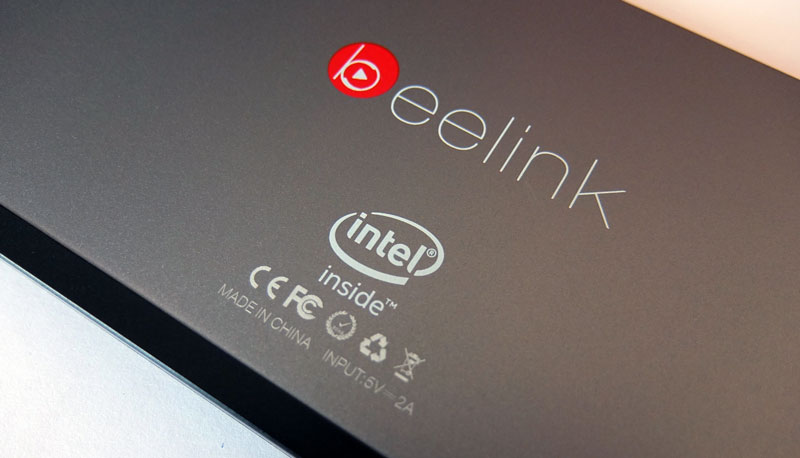
Efficiency is another thing to consider. If you need a basic, “always on” system, devices like the Beelink Pocket P1 make a lot of sense because they require burn a few few watts an hour. This is a big deal if you have a few public displays in your business, because you can get a standard Windows machine that can be controlled remotely, used to stream or playback content and so on.
In a home setting, the P1 could work as a secondary PC or a media centre, provided you don’t need a lot of external storage or connectivity options. However, since many users employ NAS systems or streaming rather than local storage. It also works as a Kodi TV box, and since it’s inexpensive and efficient, you can basically keep it on all the time. The integrated battery is an unorthodox, yet potentially useful addition to the design.
Our only big concern is questionable Windows licensing, because it could be a problem in developed markets. However, we suspect most people just won’t care, especially not on a $129 device. Windows 10 upgrades are a concern, too.
Bottom line, can we recommend the Beelink Pocket P1? Yes, given the price and no-nonsense design, we think it can be a very useful machine in many settings, from schools and living rooms, to retail stores and board rooms. Plus, it can recharge your phone in a pinch. At $129, we really can't ask for much more.
Beelink Pocket P1 Pros and Cons
Pros:
- Good build quality
- Sleek, minimal design
- Value for money
- Integrated battery doubles as emergency power bank
Cons:
- Questionable Windows licensing
- Lack of activity LED on front panel
- Firmware with tablet DNA may cause issues in some scenarios
- Mini HDMI in lieu of standard connector

